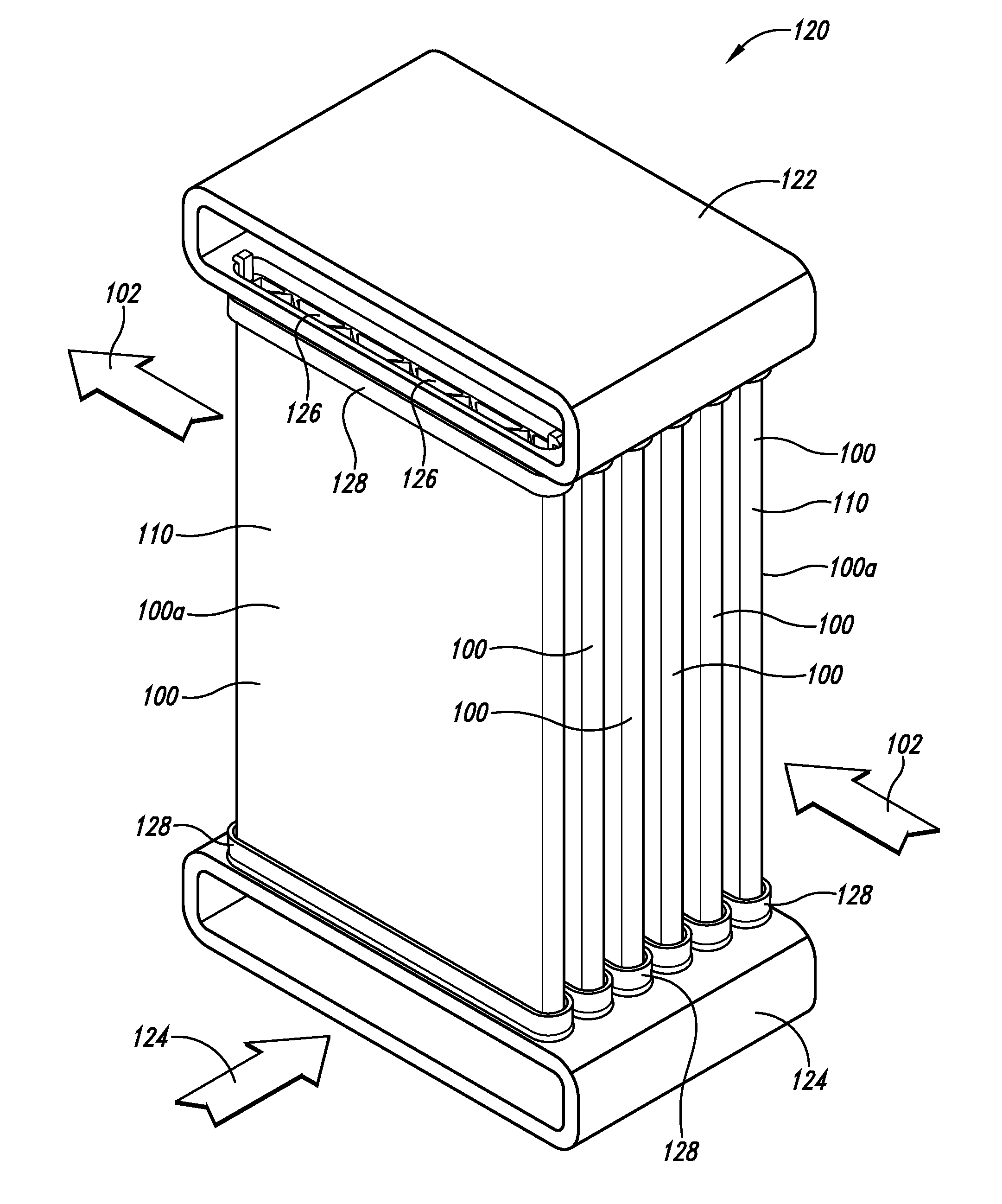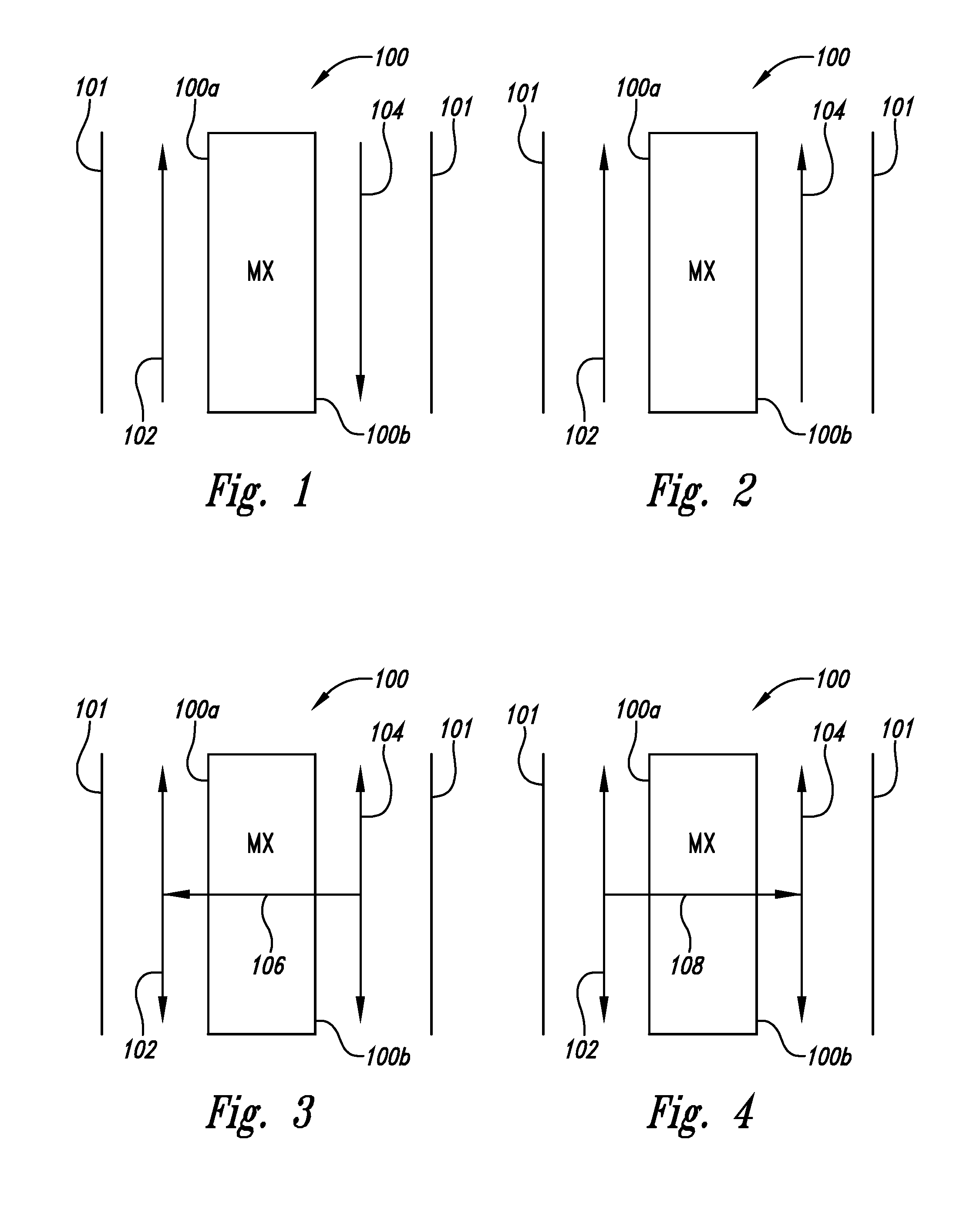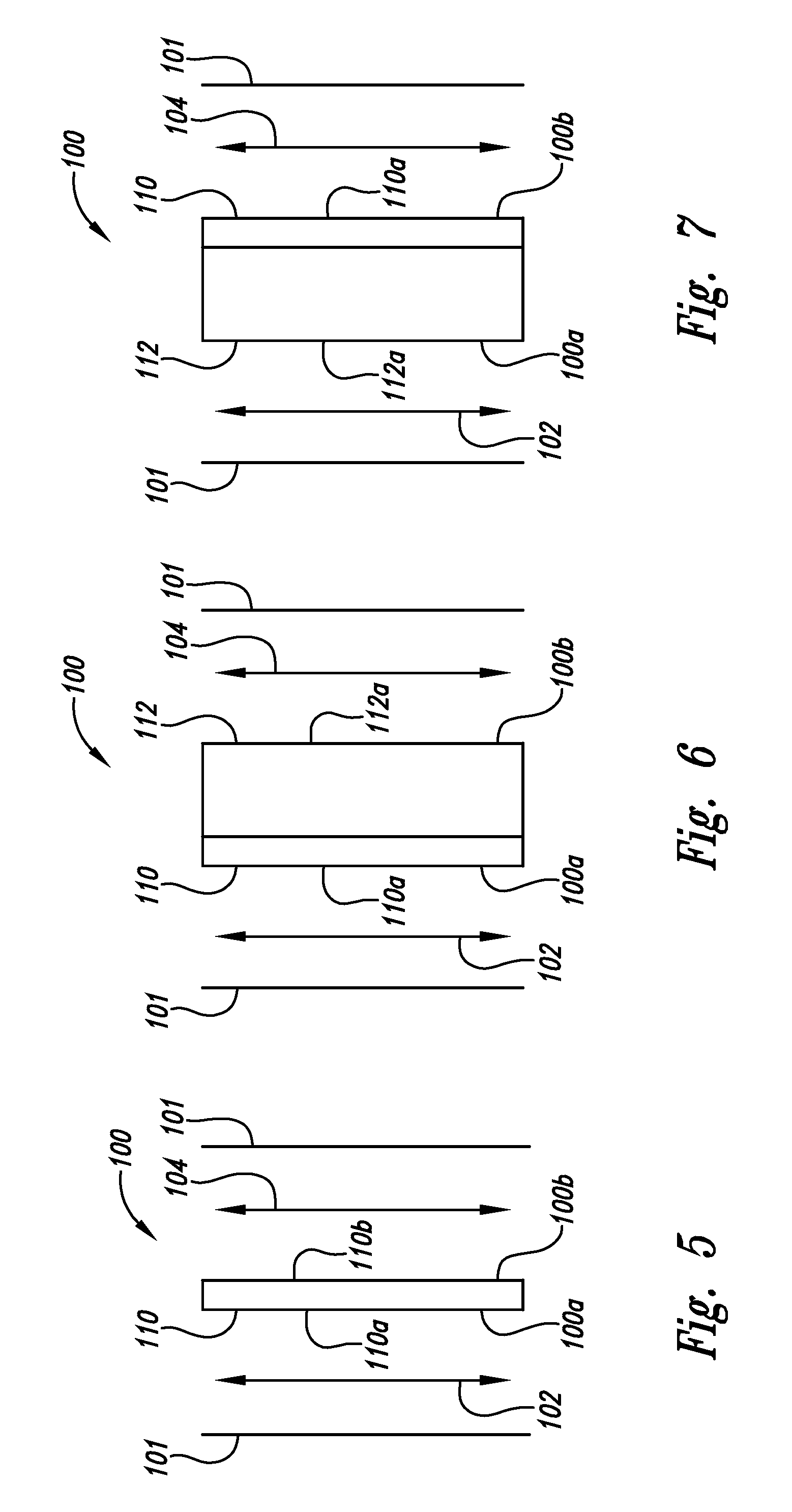Multi-phase selective mass transfer through a membrane
a selective mass and membrane technology, applied in the direction of membranes, vacuum distillation separation, separation processes, etc., can solve the problems of multiple failure mechanisms of membranes during use, common problems of moment materials, and low surface energy
- Summary
- Abstract
- Description
- Claims
- Application Information
AI Technical Summary
Benefits of technology
Problems solved by technology
Method used
Image
Examples
third embodiment
[0210]Referring to FIG. 17, a vacuum assist system 500 will now be described. Like system 400, the first material enters and exits the mass exchanger 100 of the system 500 at substantially the same temperature. However, the mass exchanger 100 of the system 400 includes two evaporators 410 and 420 in a serial arrangement and the mass exchanger 100 of the system 500 includes two evaporators 510 and 560 in a parallel arrangement.
[0211]A conduit 502 transports the higher temperature first material to the mass exchanger 100. By way of a non-limiting example, the temperature of the first material in the conduit 502 may be about 45° C. By way of a further non-limiting example, the flow rate of the first material in the conduit 502 may be about 5.65 m3 / hr.
[0212]The evaporator 510 may be constructed using any suitable evaporator disclosed herein including without limitation the evaporator 280, the evaporator 310, the evaporator 410, and the evaporator 420. The evaporator 510 depicted is subs...
fourth embodiment
[0222]Referring to FIG. 18, a vacuum assist system 600 and related process will now be described. Like system 400, the first material enters and exits the mass exchanger 100 of the system 600 at substantially the same temperature. A conduit 602 transports the higher temperature first material to the mass exchanger 100. By way of a non-limiting example, the temperature of the first material in the conduit 602 may be about 45° C. By way of a further non-limiting example, the flow rate of the first material in the conduit 602 may be about 5 m3 / hr.
[0223]The mass exchanger 100 of the system 600 includes a housing 612 housing both a segregated evaporator 610 and segregated condenser 620. The segregated evaporator 610 is separated from the segregated condenser 620 by a compressor region 640 flanked on one side by a vacuum plenum 642 and on the other side by a vacuum plenum 644. The term “segregated” means that the evaporator 610 and the condenser 620 each have a different operating tempera...
fifth embodiment
[0231]A vacuum assist desalination system 700 and related process will now be described with respect to FIG. 19. The system 700 includes a mass exchanger 100 that includes an evaporator 710. A conduit 702 transports the higher temperature first material to the evaporator 710 of the mass exchanger 100. By way of a non-limiting example, the temperature of the first material in the conduit 702 may be about 45° C. By way of a further non-limiting example, the flow rate of the first material in the conduit 702 may be about 5 m3 / hr. The higher temperature first material exits the evaporator 710 through a conduit 708 that conducts the first material outside the mass exchanger 100. By way of a non-limiting example, the temperature of the first material in the conduit 708 may be about 20° C. As is apparent to those of ordinary skill, the temperature of the higher temperature first material passing through the evaporator 710 is reduced by the evaporation process occurring inside the evaporato...
PUM
| Property | Measurement | Unit |
|---|---|---|
| weight | aaaaa | aaaaa |
| weight | aaaaa | aaaaa |
| weight | aaaaa | aaaaa |
Abstract
Description
Claims
Application Information
 Login to View More
Login to View More - R&D
- Intellectual Property
- Life Sciences
- Materials
- Tech Scout
- Unparalleled Data Quality
- Higher Quality Content
- 60% Fewer Hallucinations
Browse by: Latest US Patents, China's latest patents, Technical Efficacy Thesaurus, Application Domain, Technology Topic, Popular Technical Reports.
© 2025 PatSnap. All rights reserved.Legal|Privacy policy|Modern Slavery Act Transparency Statement|Sitemap|About US| Contact US: help@patsnap.com



